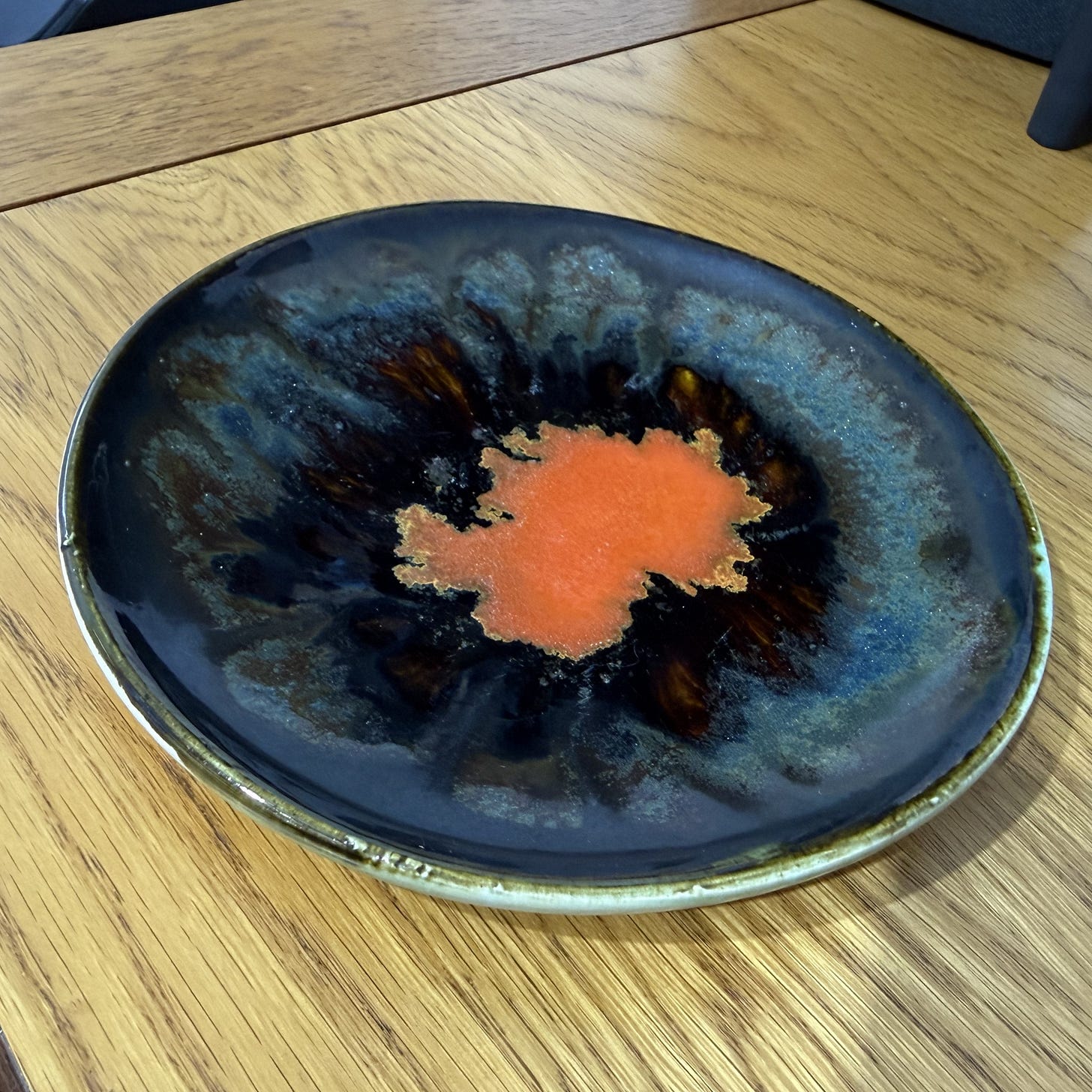The UK pottery that was using uranium glazing in the 1960s
Eric Leaper's bold colourful designs hold a radioactive secret, many used uranium to achieve brilliance
Fact sheet…
Discovered: At an antiques fair in Lingfield, UK
Age: Circa 1960s
Radioactivity: 2.74 uSv/hr (roughly 11x background radiation)
Maker: Eric Leaper (Leaper Pottery, Newlyn)
History of the maker: Eric Leaper’s work is best known for his establishment of a pottery in Cornwall, Newlyn. His work is distinctive due to its bright and bold colours, as well as the ‘splash’ glazes used. Very little information is available about him online, other than his use of dangerous chemicals to achieve some of his bold colours - he clearly experimented with uranium glazes at an unusually late time in history.
Uranium wasn’t just used in glass to colour it green, but also as a glaze to achieve bold red and orange colours. In the U.S., uranium-glazed ceramics are very common, but they’re rare to come across in the UK. So imagine my surprise to find a uranium-glazed item that was made in the UK, at a UK antiques fair, and created in the 1960s.
The date is significant because the vast majority of uranium-glazed ceramics were made between 1850 - 1948. Eric Leaper was using uranium during the 1960s to enhance the colours of his work, during a time when radioactivity was well understood, with uranium having industrial applications. Despite this, the glazing isn’t that dangerous… just don’t eat food from it as uranium is chemically toxic.
Today, his work is quite collectible with a cult following, potentially from enthusiasts like me who find ‘spicy’ objects. However, unfortunately - again for me - not all of his work uses uranium. I recently purchased a red/orange splash glaze vase as a clear Leaper piece of art, but there was no radioactivity.
The antique dealer at the fair I bought this from talked about Eric Leaper’s extravagant parties. He was apparently quite the character. If you know anything more about this potter, do let me know!



